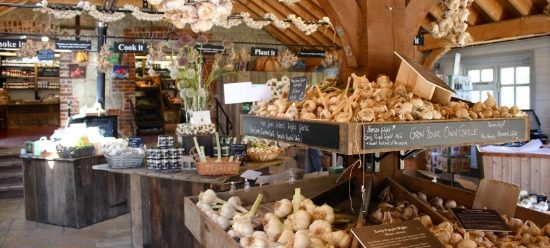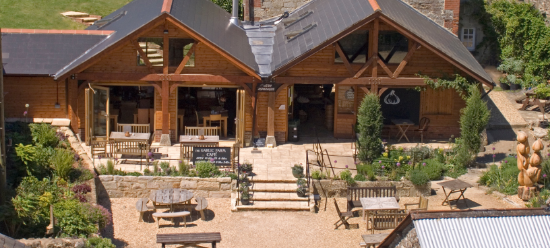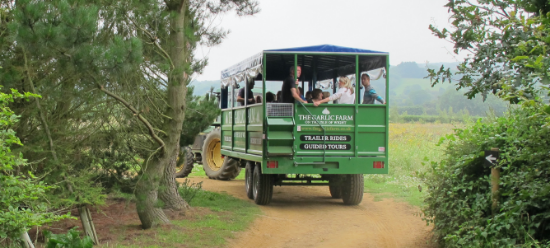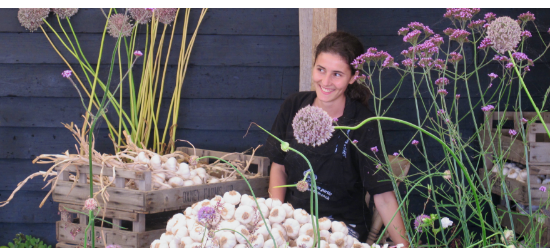
We have a stand at the Hampton Court Flower Show every year. This year we decided to provide the horticulturally minded visitors to the stand with some essential bite sized garlic facts relating to the growing and propagating of garlic seed, how to get the most out of your garlic when cooking with it and a note on garlic types. It makes for really interesitng reading for anyone remotely interested in garlic so we've decided to share that information here with you. Enjoy!
Cooking with Garlic: Extracting the flavour
Garlic comes perfectly packaged in measured portions - cloves. Versatile, long keeping and packed with health benefits, garlic influences so much in many cuisines.
Understanding more about garlic's composition will allow you to make the most of its flavour potential. When garlic is crushed, diced or cut, Alliinase (an enzyme) acts on Alliin (a sulphur compound) to create Allicin which is responsible for the smell, the strong flavours and most of the health benefits of garlic.
Introducing Allium Tuncelianum
This NEW variety from the Munzur Valley in Eastern Turkey's Tunceli Province embodies all that is exciting and current in the world of garlic.
Tuncelianum has the ability to produce viable seed, unlike Allium Sativum, which lost the ability to produce 'true seed' 6,000 years ago. Tuncelianum may hold the key for garlic researchers in their quest for creating commercially viable garlic seed.
Allium Sativum can only reproduce asexually - vegetatively - hence has no way toprotect itself from the previous year's viruses since these are held in the bulb which becomes next year's seed. Tuncelianum can avoid this by producing seeds from its seed head flower, fertilised by pollen from other plants.
Tests show that Tuncelianum bulbs contain more than four times the level of health giving sulphur compounds than ordinary garlic. It has been revered for centuries as a natural medicine in its native Anatolia.
Grow Your Own Allium Tuncelianum
The Garlic Farm invites you to be part of exciting developments in the world of garlic seed production by growing your own ancient garlic type in your own garden. Tuncelianum can be easily grown in a British garden, planted in early autumn, producing seed in July for planting in September. The bulbs usually divide into two cloves.
Garlic Types
Garlic divides into two distinct types: hardnecks (ophioscorodon) and softnecks (sativum). Hardnecks are generally more winter hardy and thought to be closer in evolution to their origins in the mountains of Central Asia.
All hardneck types produce a flowering stalk known as a scape or rocambole. Within this flower head are tiny garlic clove shaped bulbils which are occasionally viable. These are not true seed. Snapping off the scape can result in the bulb size increasing and with some garlic types the bulb can double in size.
Softneck types do not produce a flower.
Botanically there is no such thing as a garlic "variety". Garlic reproduces vegetatively, there is no crossing from pollination.
As he has done for 6,000 years, man selects the bulb he wants to grow. Modern garlic is the result. However this may all be set to change by turning garlic's biological clock back 6,000 years to produce true seed.






















